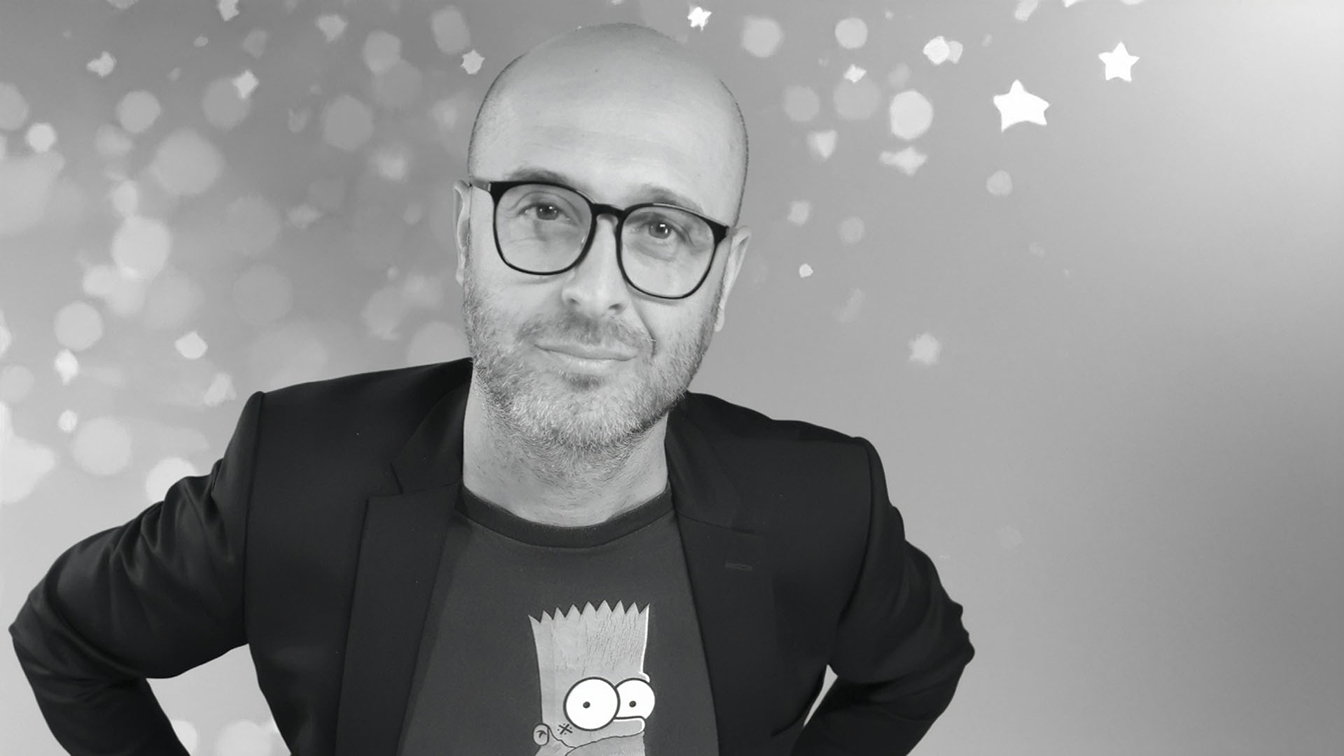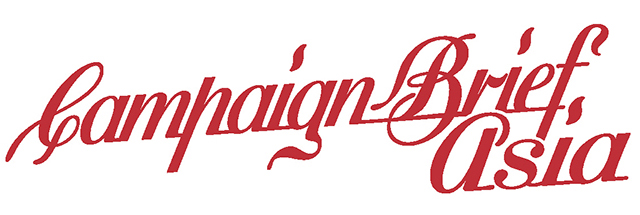The m25 Global Creative Series Episode 4: Instinct, passion and a bit of stupidity is Federico Fanti’s formula for fearless creativity

In this episode of m25’s Global Creative Series Federico Fanti, Regional Chief Creative Officer at FP7McCann MENAT is featured. m25, the global premium network, introduced these interviews to highlight international creativity and the impact of local cultures and technological advancements on creative production throughout the region. The series features interviews with key and exceptional regional creatives, illustrating how individual endeavors, when combined with cultural understanding and team building, shape successful advertising campaigns and real purpose.
Federico Fanti is a globally recognized creative leader with over 20 years of experience across Europe, Asia and the Middle East. He has crafted campaigns for regional and global powerhouse brands like Mastercard, Heinz, Barilla, Coca-Cola, J&J, P&G, Snickers, Pepsi, and Walls, earning more than 400 creative awards along the way.
During his tenure at Young & Rubicam Moscow, he helped secure Russia’s first-ever Cannes Lion (and nine more), establishing it as the country’s most awarded agency. At BBDO Guerrero in Manila, he left an indelible mark on Cornetto and Mars, and in 2022, he took the helm as Regional Chief Creative Officer at FP7McCann MENAT where he’s led the agency to 27 Lions in three years, including the first Gold Lion in FP7 Dubai’s history.
Ranked among the world’s top Executive Creative Directors by Best Ads, The Drum and The One Show, Fanti credits his success to “instinct, passion and a bit of stupidity.” He has judged at Cannes Lions, One Show, Andy’s, Loeries, ADCE and more.
Federico, you’ve had an incredible career across Europe, Asia, and the Middle East. What first inspired you to pursue a life in creativity?
I was never meant to work in advertising. I wanted to be a movie director. I was obsessed with how film could shape culture, stir emotions, and live in people’s hearts forever. Advertising was Plan B but somehow, it became the long, weird, wonderful road I was always meant to take.
I started out as an art director in Italy: big dreams, small budget, zero sleep. Then came Russia. Then the Philippines. Then finally, Dubai. Call it a creative odyssey, one that taught me to speak in cultures, not just campaigns.
And if there’s one big lesson from this journey, it’s this: boldness is born from randomness. Some of the best ideas I’ve helped create started off sounding weird. Or stupid. Or both.
Take Heinzjack, for example…
During the Qatar World Cup, Heinz couldn’t show its product, mention the event, or advertise in any way. So we found a real guy named Thomas Heinz, gave him a shirt, and let him crash every live camera he could. Strategic? Yes. Brave? For sure. But mostly? Just random. And that’s why it worked.
Or Sponsored Balls.
How do you make men pay attention to testicular cancer in a world that scrolls at the speed of light? We placed our logo in the most unexpected spot on a football jersey: the crotch. Zero media budget. Total cultural explosion. A “ballsy” idea, made possible by bold clients and braver partners. Bravery, partnership, and humanity that’s the real creative triangle.
How has the industry evolved in the UAE, and what global impact is it making?
Not long ago, creatives came to the UAE to end their careers respectfully, and with a tan. Now? They come to start them. In the last decade, Dubai’s creative industry has flipped the script: from importing ideas to exporting them. From playing it safe to owning the headlines.
This region isn’t just chasing global recognition, it’s shaping it. Campaigns like After Dinner Dinner for McDonald’s or Recipe for Change for Puck don’t just win awards. They change perceptions. They prove that world-class ideas can be born here and still feel deeply local.
What makes this place special is the cultural mash-up. So many languages, habits, and creative instincts, all packed into one melting pot. It’s not just multicultural. It’s multi-creative.
Take Recipe for Change.
A campaign rooted in a local truth Lebanese women preserving family recipes and scaled into an international impact by placing those recipes in top restaurants around the world. Local truth. Global relevance. That’s the sweet spot.
What role does culture play in creativity within the UAE?
UAE consumers are sharp. They’re fluent in memes, heritage, and high expectations. To connect with them, you need to blend modernity with tradition and do it with style.
One campaign that nailed this was After Dinner Dinner.
It tapped into a local dining truth: fancy restaurants often leave you broke and still hungry. So we offered a free McDonald’s meal to anyone who showed a high-end dinner receipt. No influencers. No flashy content. Just geo-targeted, culturally tuned generosity.
People loved it because it spoke to something universal. That’s one of advertising’s golden rules: relatability wins. The best campaigns make people think, “Wow, that’s me.”
How do you see technology and innovation shaping creativity today?
Let’s talk AI. Yes, it’s amazing. Yes, it’s changing everything. But here’s the catch: it’s a tool, not the driver. AI is the engine, sure but the human is the compass. Tech can boost creativity, but it should never replace instinct. If you lose the human touch, the work becomes smart but soulless.
That’s why we’ve embraced AI and digital tools without losing sight of who’s in charge. We use them to speed up, enhance, explore but never to decide.
What role does social media play in your creative process?
Social media isn’t just where people talk it’s where they reveal. You want to make a real impact? Start by listening. That’s what we did with the Heinz Insurance campaign.
People kept posting about ketchup accidents. So, we turned that pain into a perk with real Ketchup Insurance. If you spilled, we’d cover the cost of your dry cleaning or your ruined food. Simple. Funny. Honest. That’s how you earn attention these days.
What advice would you give to the next generation of creatives?
My advice for young creatives? Stay curious. Stay weird. And don’t be afraid to share the idea that sounds too crazy to say out loud. Because sometimes, those are the ones that make headlines. Smart ideas impress. Stupid ideas travel.
Also, don’t chase formats, chase feelings. Start with what’s culturally true, then figure out the media. We use a mantra in the agency: “Culture first, format later.” That thinking has led to some of our boldest, most effective work.
UAE is a great place for young talent. It’s less about hierarchy, more about hustle. I’ve seen interns go from deck duty to directing major campaigns in two years flat just because they had guts and support.
Why is mentorship so important to you, and how do you nurture growth in others?
Mentorship has always been a big part of how I lead, not because it’s expected, but because it’s where the real magic happens. One of my proudest stories is Francesco Negri. He joined us young, hungry, and full of potential. We gave him space, trust, and some truly wild briefs. Today, he’s an award-winning ACD and one of my most trusted partners. That’s what happens when you invest in people and give them the room to grow.
I’ve seen the same with Nayaab Rais, who rose from Creative Director to Executive Creative Director. And with Jonathan Cruz, who’s become an essential part of the creative heartbeat of the agency. Watching them evolve, lead, and shape the work, not just creatively, but culturally, has been one of the most fulfilling parts of my journey.
I also make time to regularly sit down with juniors. Not just for reviews, but to ask one simple question: “What’s the idea you’re scared to share?” Because that’s usually where the gold is hiding.
I love mentoring creatives because I truly believe in learning by teaching. Sure, I share my experience, but I gain so much in return, their energy, instincts, their pulse on culture.
That exchange keeps me sharp. I’ve always believed that curiosity should fuel every creative, no matter their age or title. That’s the culture I try to build every day, where there is no room for egos or siloes but team camaraderie and a space for everyone to share their ideas.
To make mentorship part of our daily rhythm, I’ve helped create platforms like Next Up, a mentorship pipeline where junior creatives are paired with senior leaders to co-lead live client pitches. It gives them real visibility and ownership from day one.
To me, that’s what mentorship should be, not a top-down exchange, but a shared space for growth, creativity, and unconventional ideas.
What strategic and operational insights guide your work in the UAE?
Great strategy is simple: solve the real problem, not just the brief. That’s why we bring strategy, creative, and business leads together from day one. We call it the “Creative Core.” It keeps ideas sharp, connected, and effective.
Expansion in UAE comes with its own hurdles like navigating cultural complexity, balancing multiple languages, or dealing with hyper-speed timelines. But the solution is always the same: listen well, think local, and lead with empathy.
Looking ahead, what do you see as the future of creativity?
Looking ahead, I think we’ll see even more crossover between culture and commerce. Creatives will need to be part strategist, part storyteller, part tech explorer. But no matter how advanced things get, the work that wins will still be the work that feels.
So here’s my prediction: The agencies that thrive will be the ones that embrace randomness, use tech as a tool not a crutch and never forget that humans are behind the wheel.
Finally, what message would you like to leave with creatives around the world who are shaping the future of our industry?
Let the weird ideas in. Unleash the stupidity with purpose. That’s where the magic hides.
Read previous episodes of the m25 Global Creative Series below:
Episode 11: Maan Bautista, Executive Creative Director at VML Manila
Episode 10: Pradeep D’Souza, Founder/Creative Partner at Nine:TwentyEight, Singapore
Episode 9: Jonathan Cruz, Creative Director at FP7McCann Dubai
Episode 8: Asheen Naidu, Group Executive Creative Director at Leo Singapore
Episode 7: Yubin Bang, Creative Director at Cheil Seoul
Episode 6: Jerry C. Hizon, Chief Creative Officer at Dentsu Creative Philippines and Dentsu Creative Manila
Episode 5: Jasmine Huang, MD & Head of Content Production at Prodigious China
Episode 3: Ratna ‘Sasa’ Puspitasari, CEO at Fortuna Indonesia
Episode 2: Livio Grossi, Group ECD at Dentsu Redder Vietnam
Episode 1: Merlee Jayme, Creative Chairmom and Founder of The Misfits Camp and Jayme Headquarters
